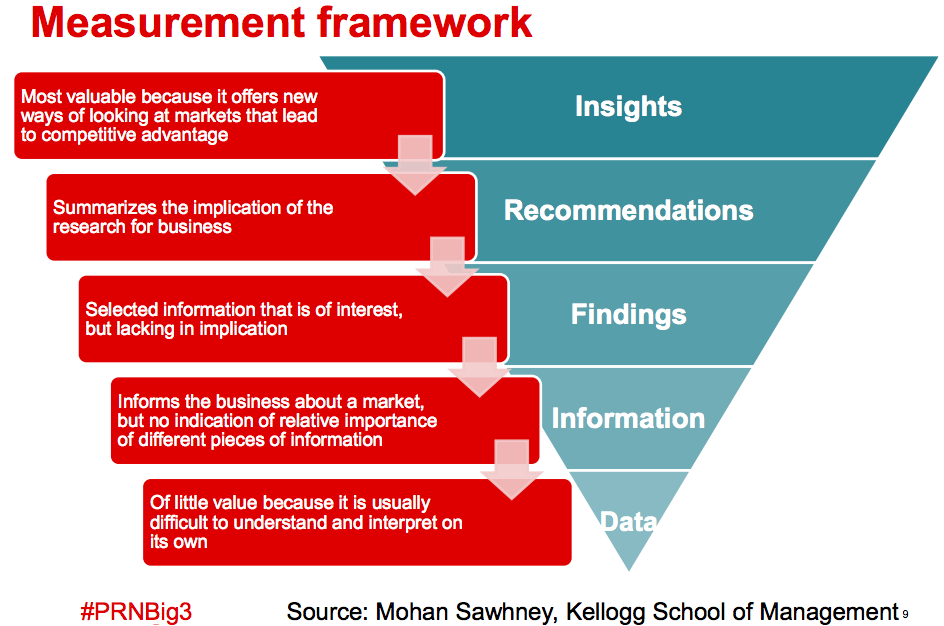Developing a social-media measurement strategy can be a challenge for PR pros trying to convey the value of likes, followers, reach and engagement to senior management. One of the best approaches to proving value is by defining key performance indicators (KPIs). Unlike the often fuzzy concept of ROI, establishing KPIs for your measurement program will clarify which digital metrics to measure and also provide the clear, concise stats needed to convince data-driven C-level executives that your social-media efforts are moving the business needle.
At PR News' April 18 Big 3 Conference, two measurement executives provided seven ways to establish KPIs for your activities on Facebook, Twitter and Pinterest and that tie back to your organization's business objectives.
1) Differentiate KPis vs Metrics: The main difference between a KPI and other metrics is "the fact that you tie KPIs back to business objectives,” said Joy Hays, worldwide manager of digital & social media communications. “Numbers don't mean anything until we make them mean something—business objectives define everything that we need to do,” Hays said. So digital communications gives you all these things to measure, and all this stuff, but KPIs limit measurement to what's important to management.
2) Define success: "You want to set your SMART goals (specific, measurable, attainable, relevant, time-bound)," said Toni Jones, social media manger at U-Haul International.
3) Include social from the start, not as an afterthought: PR and social media need to be involved in the entire process of launching campaigns, Jones said. "Having tracking links is important so that all campaign touchpoints (e.g., websites) are linked together."
4) Avoid the Meltdowns: Hays described what she calls "the measurement meltdown cycle." "In any one of these four examples, you don't really have value to add, or evidence that pushes your agenda for social media forward in the company.
- Action but no data.
- Data, but no insight.
- Insight, but no context.
- Context, but no action. "Content is king, but content without context is a figurehead with no power—give content some context to prove its importance."
5) Follow this measurement framework: In fact, print it out, tape it on your wall. Consider getting it tattooed.
6) Analyze results with a human touch: "Data and reports can only take you so far. Understand how outcomes relate to behavior. Then make decisions," said Jones.
7) Refine strategy: "Don't get stuck on what's trending; only do what's right for your goals and your organization," said Jones. "Just because everyone is on Vine, doesn't mean we need to be there. It has to be right for our business—you don't have to be on every platform."
Follow Bill Miltenberg: @bmiltenberg; Follow Joy Hays: @joyhays; Follow Toni Jones: @uhaul

